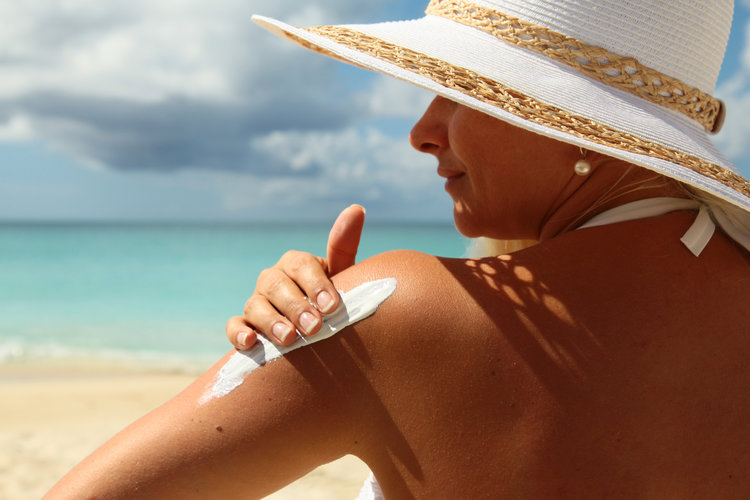Has this ever happened to you? You spent a great day outdoors, maybe at the park or the beach, and you had a lot of fun. You wash up before bed ready to face what tomorrow will bring. Then you notice it, painful, hot red skin all over! Despite using sunscreen, you have a sunburn! How in the world did that happen?
Chances are, you used the wrong type of sunscreen. It’s not all created equal, and while it was once a simple matter of grabbing the highest SPF on the shelf, that’s not even the case any longer. Sunscreen has gotten more complicated, and if you don’t learn what your options are and which is right for you, you may have doomed yourself to days of painful, itchy sun burned skin—let alone the threat of skin cancer.
PHYSICAL VS. CHEMICAL SUNSCREENS
This is one of the biggest changes in sunscreen, and it’s a good place to start. Sunscreens can now be divided into physical and chemical types. As long as they’re labeled as “Broad Spectrum” (more on this later), both types claim to protect your skin equally well, but there is information you should know before choosing.
Physical sunscreens protect your skin by placing a coating made of natural minerals on your skin. These minerals, which include things such as zinc oxide and titanium dioxide, lie on your skin and deflect the sun’s harmful UV rays.
They’re a good defense against sunburn, and they take effect pretty much right away. However, as you may well know, physical sunscreens can rub, wash, or sweat off easily, so you’ve got to keep reapplying them. It used to be that these physical sunscreens were very obvious (think lifeguards with white zinc – slathered noses). But that issue is a thing of the past. We at Clarity love sunscreens created by the doctors at EltaMD, they offer several different formulas that work well for dry, oily and sensitive skin.
Chemical sunscreens, on the other hand, use, you guessed it, chemical ingredients. These ingredients include things such as avobenzone, octisalate, and oxybenzone. They actually cause a chemical reaction when they come into contact with UV rays. These rays are transformed into heat and then released. We won’t deny there’s some controversy regarding the safety of the ingredients in chemical sunscreens. We invite you to check out EWG.org This is a great place to see how safe your sunscreen really is.
SPF
Now that you know the difference between the types of sunscreens, let’s look at what they do. Everyone is familiar with SPF. It stands for Sun Protection Factor, and just as you’ve always been taught, the higher numbers do protect you longer. Did you know that you can tell how long it’s safe to be outside by the SPF? Just multiple it by 10. An SPF of 20 means you’ve got 200 minutes of protection before you start burning!
Well, at least that’s a rough estimation. In practice, you might have determined that this calculation is a bit off. That’s because you do have to take your skin tone into account. If you’re very light skinned, expect to burn more quickly. The same is true if you suffer from lupus or other conditions that increase your skin’s sensitivity to light. In this case, you may want to go for an SPF 30 or higher.
Now, it is important to note that SPF 30 is not twice as effective as SPF 15 as far as blocking UV rays. It’s actually not that much more powerful. SPF 15 blocks about 93% of the harmful UV rays, while SPF 30 blocks out about 97% of them. The difference is in the time you’re protected.
UVA VS. UVB
SPF is actually only half the story. When you’re exposed to the sun’s rays, you’re getting hit with both UVA and UVB rays. UVB rays are the ones that typically cause skin cancer. They’re what most people are trying to avoid. But UVA rays can also cause cancer. The big difference is that they don’t cause your skin to burn. Instead, they penetrate more deeply and cause (gasp!) wrinkles. Although everyone knows I’m a big fan of wrinkle reversers such as dermal fillers and neurotoxins, I’m an even bigger fan of preventing wrinkles in the first place.
SPF only measures the effectiveness of a sunscreen against UVB rays. That’s because for years people assumed that UVB rays were the biggest problem. Now that we know about UVA rays and the damage they can do, it’s important to look for a sunscreen that will defend against them, too. While there’s no handy number to tell how well a sunscreen protects against UVA rays, you can look at the ingredients. Anything labeled “Broad Spectrum” with zinc oxide, oxybenzone, avobenzone, ecamsule, titanium dioxide, or sulisobenzone will protect against these rays.
SPECIAL SUNSCREENS
Finally, you should take into account any type of allergies or skin issues you have. There are special sunscreens out there for rosacea, acne, and sensitive skin, plus much more. You may want to go so far as to talk to your doctor about the best type of sunscreen for your particular condition.
These tips will help you hunt down the best sunscreen out there. To recap, go for a high SPF, look for a “Broad Spectrum” sunscreen that blocks both UVB and UVA rays, and make sure what you’re using works for your skin type. At Clarity, we’re always happy to talk to our clients about how to best protect their skin. Contact us to schedule your free consultation to learn more.


